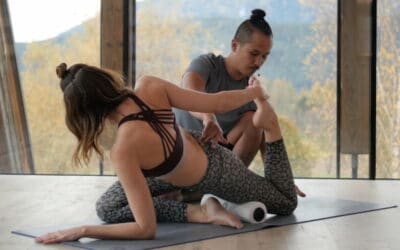Inside Yoga was founded by Young Ho Kim, a former martial artist who fell in love with yoga. Learn everything you’ve always wanted to know about Inside Yoga and Young Ho Kim in this article.
Let’s talk about Inside Yoga:
- 1. What Is Inside Yoga?
- 1.1. Founder of Inside Yoga
- 1.2. History of Inside Yoga
- 2. Everything You Need to Know About the Inside Yoga Studio
- 2.1. Where Can I Find the Inside Yoga Studio?
- 2.2. What Does the Inside Yoga Studio Offer You?
- 2.3. Who Teaches at Inside Yoga?
- 2.4. Which Yoga Styles Are Taught at Inside Yoga?
- 2.5. Which Yoga Teacher Trainings Are Available at Inside Yoga?
- 3. What Differentiates Inside Yoga From Other Yoga Schools?
- 3.1. What Are the Main Asana Categories Inside Yoga Focuses On?
- 3.2. What Are the Alignment Principles of Inside Yoga?
- 3.3. The Three A’s of Yoga
- 4. What If I Can’t Come to Inside Yoga in Person?
1. What Is Inside Yoga?
On the one hand, Inside Yoga is a yoga studio located in the heart of Frankfurt, Germany founded by Young Ho Kim. On the other hand, Inside Yoga is its own yoga school with specific principles and values. The Inside Yoga studio presents you with sophisticated yoga workouts, rest and relaxation away from your home or office. It can become your home away from home, an oasis only for you and fellow Inside Yoga enthusiasts enabling you to leave your day-to-day life behind.
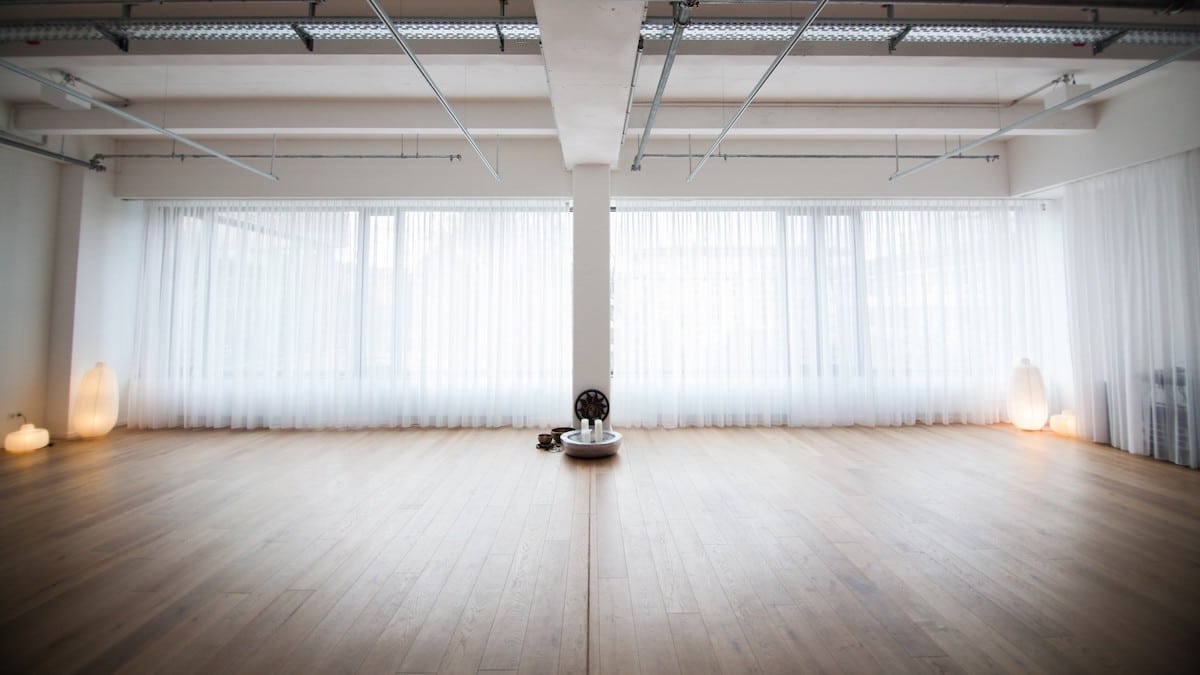
The Inside Yoga Studio can be your oasis of relaxation. Photograph provided by Inside Yoga.
Not only can you find yourself in movements, you can also enhance your knowledge about yoga with the library in the Inside Yoga studio, or just sit back and have a nice tea in the Inside Yoga Lounge.
Inside Yoga Frankfurt has classes for all levels of yoga on offer, from yoga beginners to advanced yoginis. You can take as many – or as few – classes as you like. Why not drop by sometime if you’re in the area of Frankfurt, Germany?
Apart from providing you with a place to rest, you can also take part in yoga retreats with the Inside Yoga Team. These events give you a chance to connect with fellow yogis and Inside Yoga enthusiasts, and can be your escape from a stressful everyday life.
As you can see, Inside Yoga has something for everyone. As Young Ho Kim puts it: “All you need is Inside.”
1.1. Founder of Inside Yoga
The history of Inside Yoga is intrinsically linked to its founder, Young Ho Kim. Young Ho Kim, the founder of Inside Yoga and TINT Yoga, was born in South Korea in 1976. In 1989, he moved to Germany with his family. Young Ho grew up passionate about Taekwondo, Qigong, Tai Chi and Zen Buddhism as well as fitness and dance. His many interests led him to pursuing a concept incorporating physical movement and philosophy, enhancing both physical health and mental health. When he took his first yoga class in 1999, he was hooked immediately.
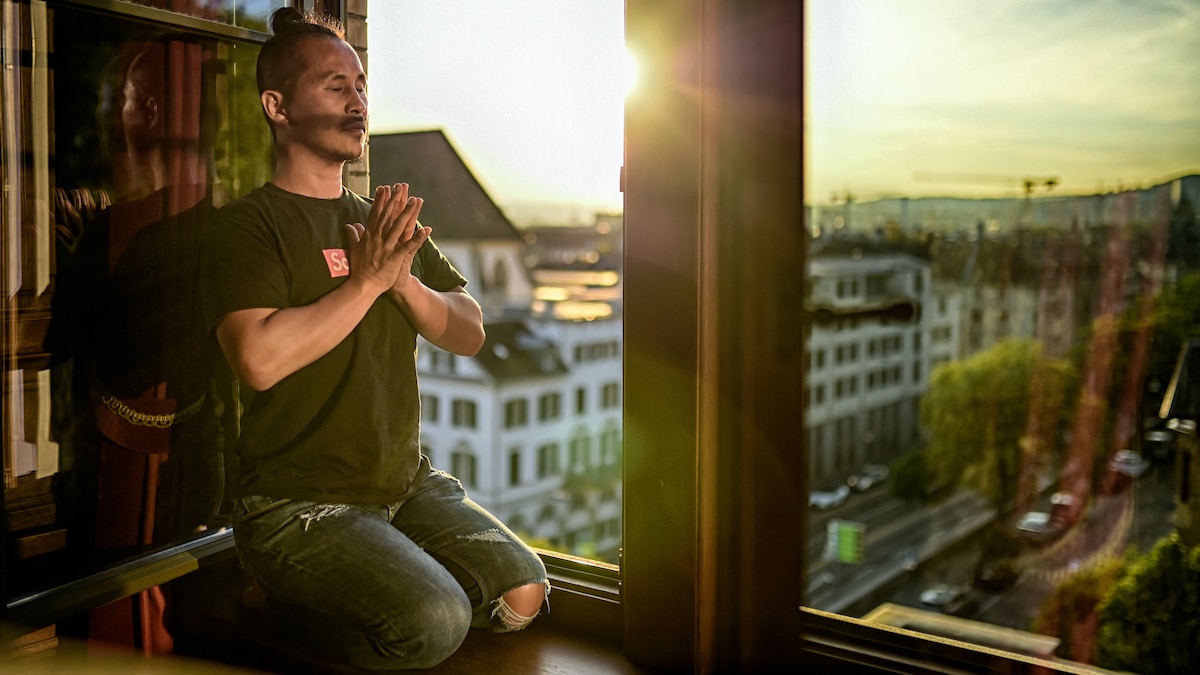
Inside Yoga and TINT founder Young Ho Kim has been passionate about yoga since 1999. Photograph by Yongsubi.
Young Ho Kim is a former martial artist who fell in love with yoga. His yoga journey was tinted by a diverse array of teachers and many different styles of yoga. However, Young Ho felt that while he loved learning new styles of yoga, he did not truly belong with any one style. That all changed in 2007 while teaching yoga at an international conference in San Diego…
1.2. History of Inside Yoga
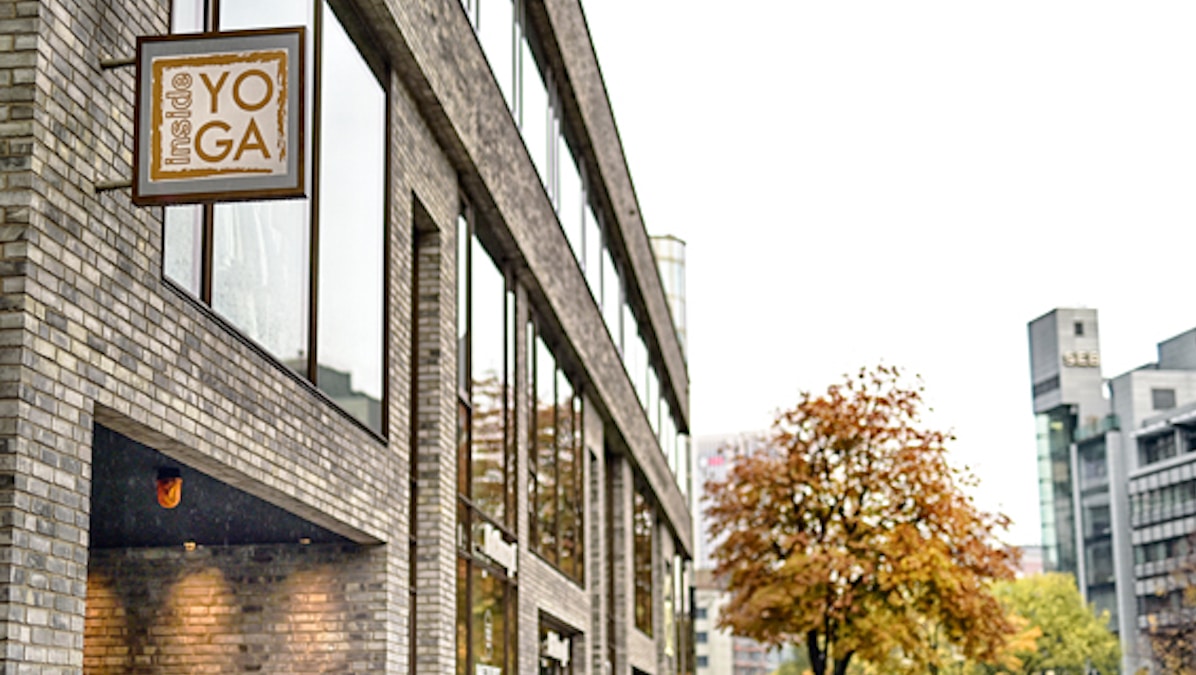
The Inside-Yoga-Studio as seen from outside. Photograph provided by Inside Yoga.
That day in 2007, he felt a strong voice inside him – a voice encouraging him to create his very own yoga style. Back in Germany, the studio he used to teach yoga went bankrupt – and he took this as a sign to create something new and truly special:
A fusion of his own yoga styles. Since that fateful day, Young Ho successfully established the biggest, most renowned yoga studio in Germany, Inside Yoga. The studio is based in Frankfurt and is an oasis of relaxation for everyone.
Young Ho Kim has been teaching yoga for over 20 years. He believes in constant evolution and ongoing education. But he also wants to help you find health and happiness through the practice of yoga. That’s why he founded Inside Yoga.
2. Everything You Need To Know About the Inside Yoga Studio
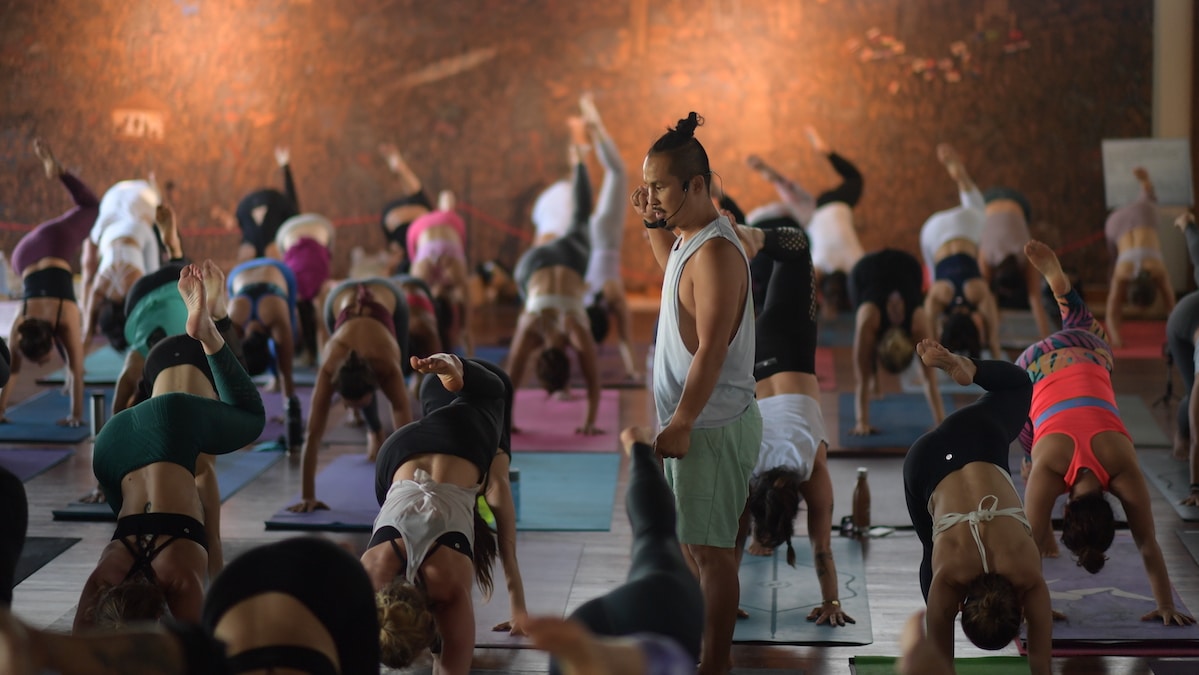
Experience the energy of practicing yoga together with other passionate yogis. Photograph by Yongsubi.
Now that you know a little bit about the history of Inside Yoga and its founder, Young Ho Kim, you’ll learn more about the Inside Yoga Studio and everything you can do there.
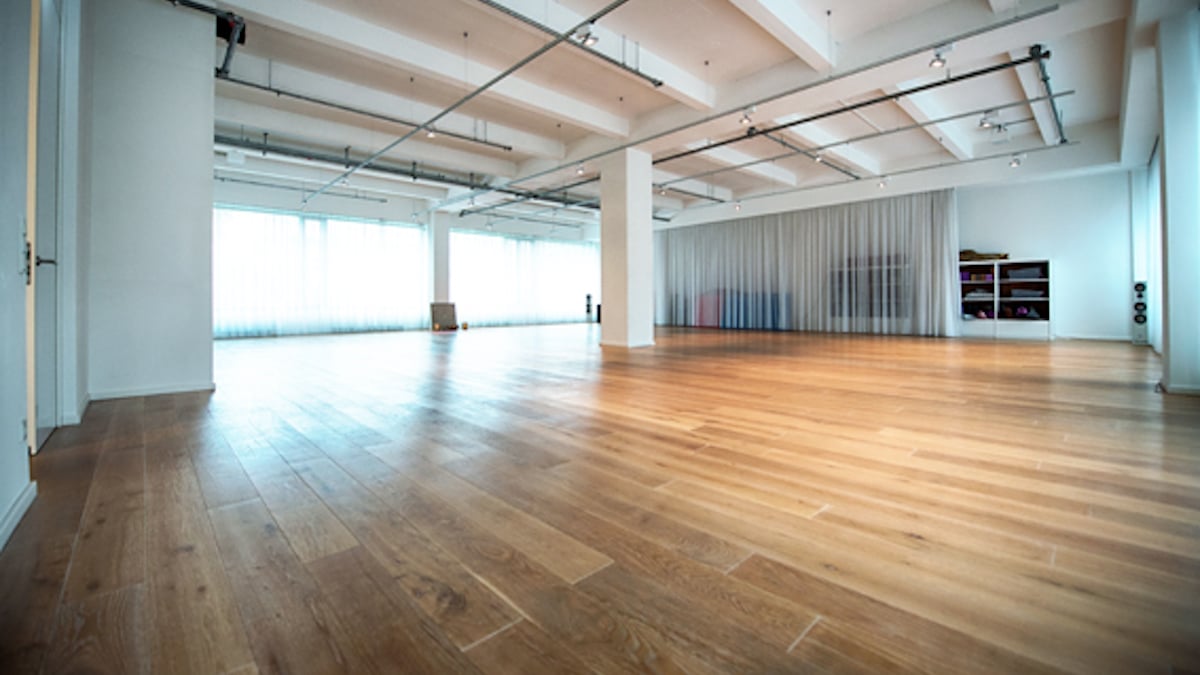
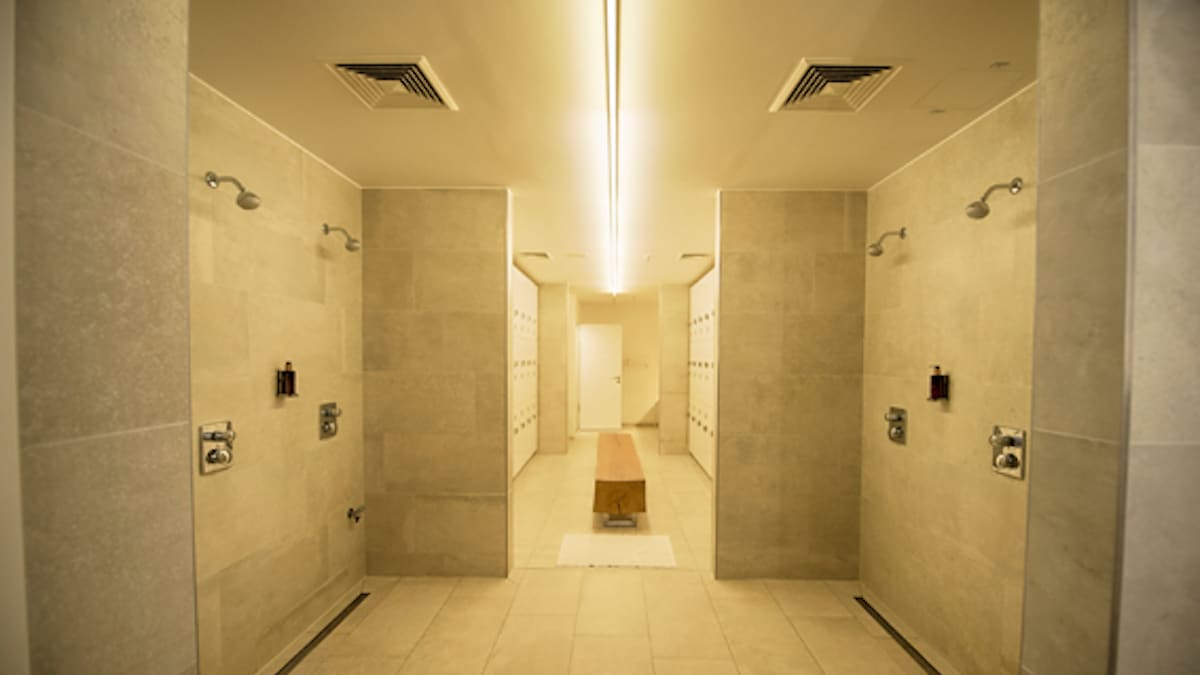

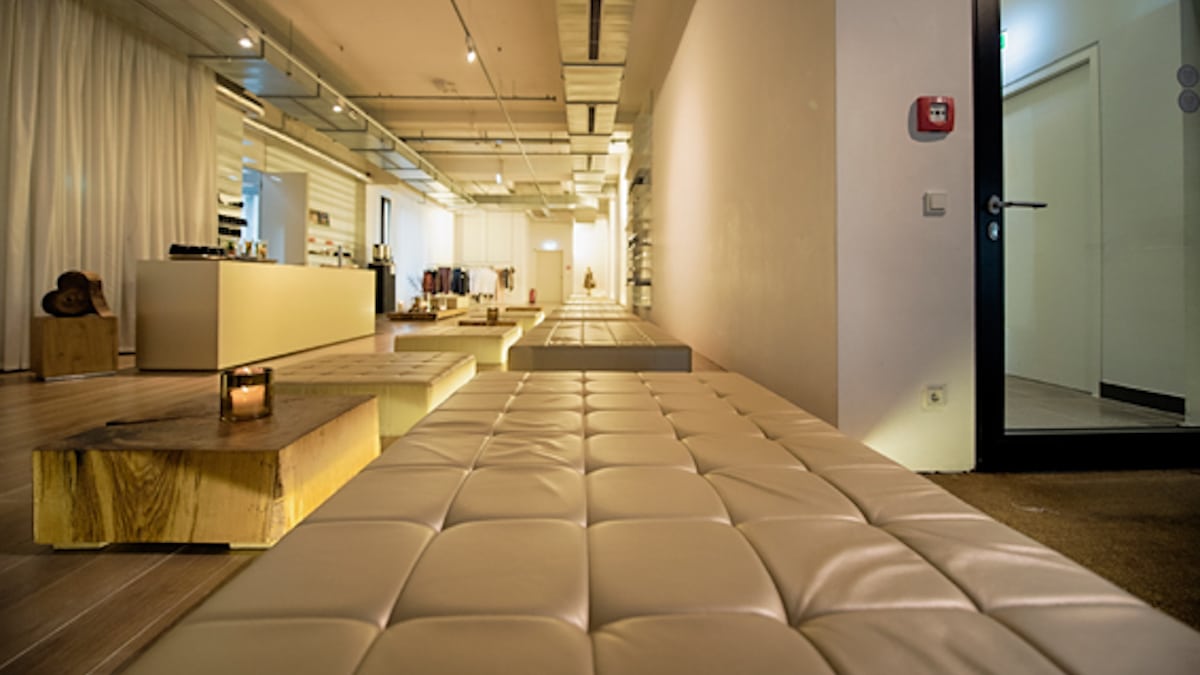
The Inside Yoga Studio has many things to offer: Take classes, relax in the sauna, read in the library or just enjoy a tea in the lobby.
2.1. Where Can I Find the Inside Yoga Studio?
The Inside Yoga Studio in Frankfurt is situated in central Frankfurt, in the Stephanstraße 3. It’s only a few steps away from the S-Bahn station Konstablerwache.
2.2. What Does the Inside Yoga Studio Offer You?
The Inside Yoga Studio offers you classes for all levels of yoga practitioners and everything else you need to escape a stressful day by finding yourself in movements.
2.3. Who Teaches at Inside Yoga?
Currently, around forty teachers dedicate their time to Inside Yoga. Young Ho Kim, the founder of Inside Yoga and TINT Yoga, teaches classes himself and is always excited to teach new students. Some of the Inside Yoga teachers are also part of the TINT team, for example:
Ami Norton, a Senior Inside Flow Teacher, loves travelling and is never afraid of change. She first came to the mat in 2006, during her first year at university in England. Yoga has been a constant in her life ever since, something she always came back to and found her inner balance with. Ami completed her teacher training at Inside Yoga and was Young Ho Kim’s student. She gives workshops and teacher trainings in Germany and internationally.
Hie Kim, the Founder of Echo Sequencing is a Senior Yoga Teacher. He has been teaching yoga since 2009, and was a martial arts teacher from the age of 16. He writes poetry for Savasana, is a very easy-going person and dreams of making the world a more understanding place.
Alexey Gaevskij, the Founder of MYMOVES, a holistic integrative movement approach which helps you grow in your everyday life, has been a passionate practitioner of Taekwondo since 1997. In 2005, he added Qi-Gong and Yoga to his repertoire. A balance of hard and soft elements set the foundation for his teaching. In life, he strives for harmony and clarity.
Find out more about the dedicated Inside Yoga Team on the Inside Yoga website.
2.4. Which Yoga Styles Are Taught at Inside Yoga?
At the Inside Yoga Studio, you can participate in a number of exciting classes on many different styles of yoga. Here are some examples:
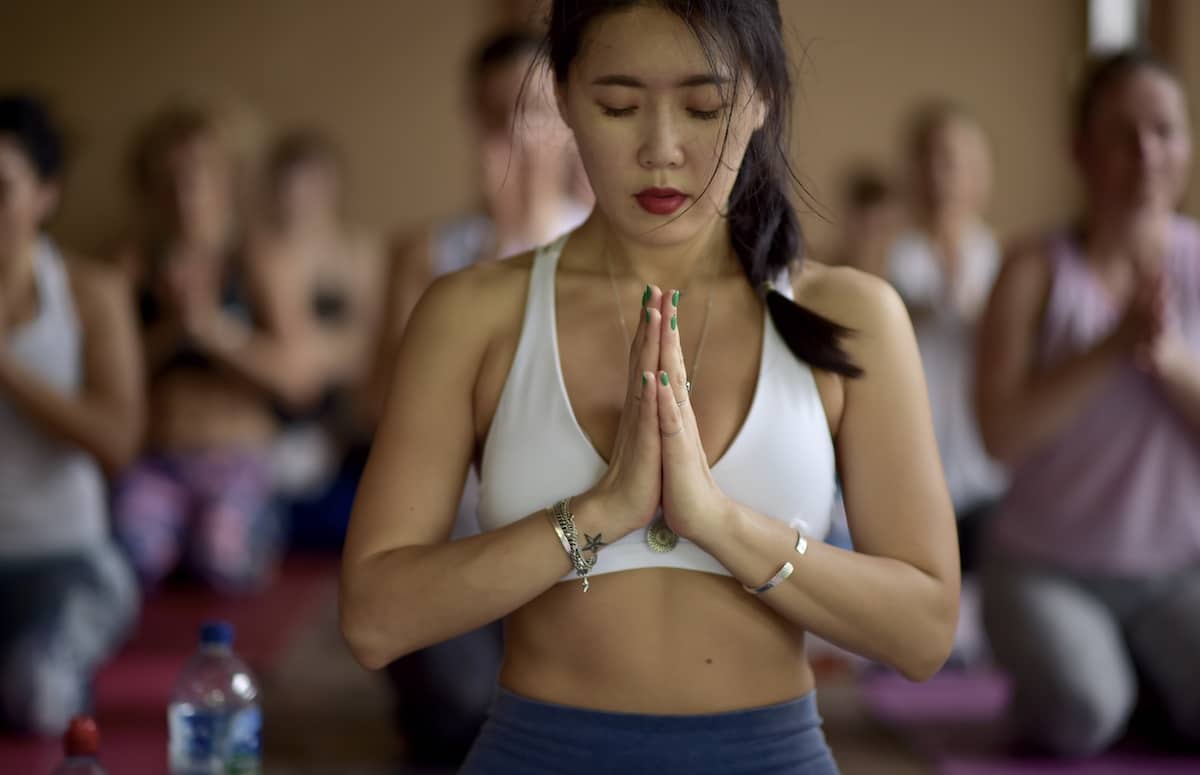
Find your inner voice with Inside Yoga. Photograph by Yongsubi.
Aerial Flow Yoga is a practice of yoga using a special shawl that enables yoginis to distribute their body weight partly, or completely, onto the shawl. This shawl can be used to facilitate reaching a certain asana, and is sometimes used to reverse it. Some poses are reachable only by use of the shawl. Aerial Flow Yoga is a mixture of Aerial Yoga and Vinyasa Yoga that includes breathing exercises. This style of yoga is suitable for both yoga beginners and advanced yoginis.
Asana & Pranayama combine special breathing techniques (pranayama) with yoga poses (asanas). The focus on the breath balances body and mind. You can read more on Pranayama in this article on the power of yogic breathing.
Core Yoga (Postnatal Yoga) helps strengthen your spine and back muscles, along with your core and pelvis. These exercises help improve posture and can soothe back pain. They can also help you regain your strength after giving birth. From 4-6 weeks after giving birth, you can practice Core Yoga together with your baby.
Hatha Yoga unites mind and body. The focus of this class is mindfulness, the perception of your body in combination with breathing exercises. This class is ideal both for beginners and for everyone looking to improve their yoga techniques.
Inside Flow evolved from Vinyasa Flow. Take an hour for yourself, an hour without beginning or end that lets your movements flow freely. Breathing exercises and asanas are combined with modern music, while a dynamic choreography helps you improve your stamina. This class is perfect for more advanced yoginis. If you’d like a more in-depth explanation, this article on the grace of Inside Flow is for you.
Start your yoga mission with Young Ho Kim’s Man on a Mission Inside Flow.
If you’re feeling a bit tired and don’t want to move too much – but still want to take care of your mind and body – Yin Yoga is for you. The practice is a calm, passive yoga style done by sitting or lying down. This style of yoga helps you breathe freely, let go and relax.
The Inside Yoga course plan shows you all the classes you can take at Inside Yoga, and gives you information on the prices for all classes. You can also download the course plan and find information about the different styles of yoga in the class descriptions.
Want to have the website at your disposal even quicker? You can also download the Inside Yoga app in the App Store and at Google Play. It’s free and helps you stay connected to the Inside Yoga Team with all news on Inside Yoga, keeps you up-to-date with the classes at-hand and tells you interesting facts about the team.
And if you don’t feel like taking a class today? Inside Yoga also gives you the opportunity to relax with a massage or in the sauna. If you’re not the type for a group yoga session, you can also book a session with a personal trainer.
If you’re more the spontaneous type, that’s also perfectly fine – you can borrow any equipment you need, like a yoga mat, towel or shawl for Aerial Flow Yoga, for a small fee. You can find the prices on the website.
2.5. Which Yoga Teacher Trainings Are Available at Inside Yoga?
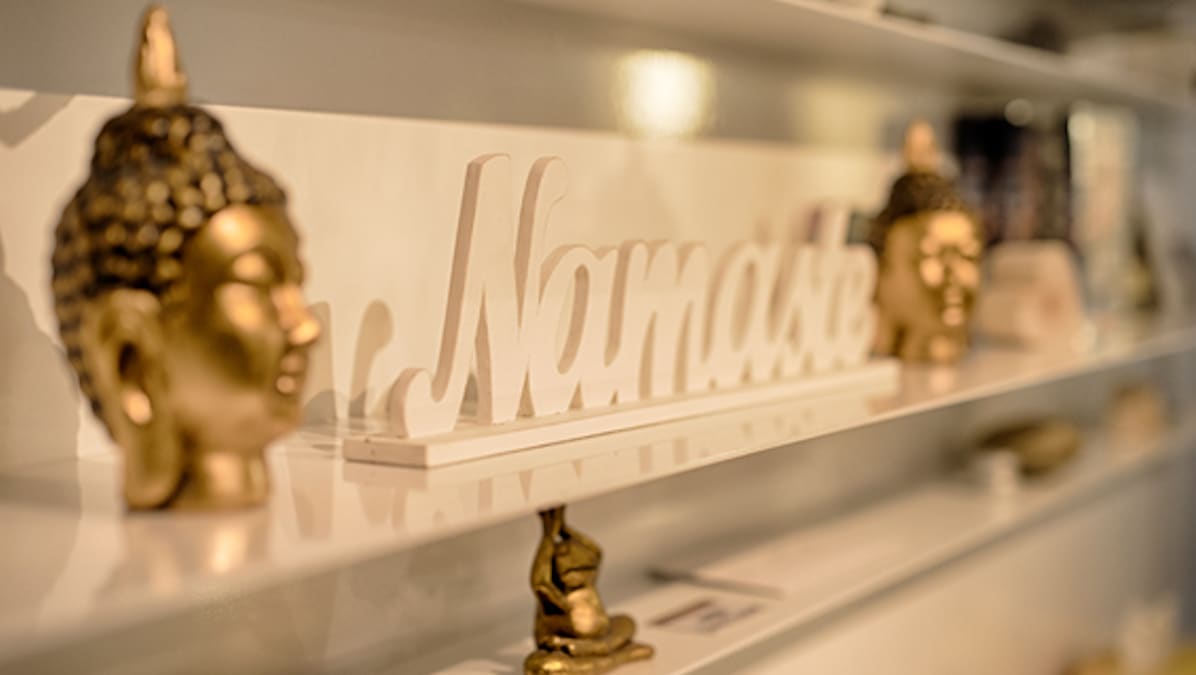
The word namaste has a special meaning for yogis. Photograph provided by Inside Yoga.
At Inside Yoga, you can partake in Yoga Alliance certified teacher trainings that are recognized all over the world. After having taken the 200 hours teacher training, you will be able to reach your dream of becoming a certified yoga teacher. This training focuses on four main modules:
1. Alignment, 2. Vinyasa, 3. Adjustment and 4. Teaching. Since the training is quite intense for your body and mind, it’s advisable to practice yoga for around a year before starting your teacher training.
You’ve already completed your 200 hours of basic training and want to continue your yoga journey? Inside Yoga provides you with a 300 hour further training that you can create as flexibly as you like, with a number of modules that you can put together as you see fit. After every module, Inside Yoga will give you a certificate of completion that recognizes the hours of work you have put in. Some of the modules of the training are:
- 100 hours of personal training
- 50 hours of Inside Yoga Flow training
- 40 hours of Aerial Yoga training
Find more information on your training opportunities on the Inside Yoga website.
No time to attend the trainings in person? On TINT, you can watch the Inside Yoga 3-days Intensive Training. This video series gives you an intense glimpse into your path to becoming a yoga teacher. You will learn the basics of forward bends, backward bends, twists and arm balances – and many more basic principles of working with your body.
You will also learn yoga-specific anatomy and physiology. The program will answer questions such as, “which muscles are activated during Cobra pose, and which aren’t? Why?”. The Inside Yoga 3-days Intensive Training is perfect for you, no matter if you’re currently planning on becoming a yoga teacher, or are already teaching and looking to perfect your craft.
3. What Differentiates Inside Yoga From Other Yoga Schools?
“Yoga is a science.”
Inside Yoga is built on a number of key principles of alignment. Alignment describes the proper positioning or state of adjustment of parts (in the context of Inside Yoga, specifically the bones in your body) in relation to each other. Simply put, Inside Yoga aims at the adjustment of bones through muscular power. The teachings are an organic system that is constantly evolving based on new scientific developments. Or as Young Ho Kim puts it, “Yoga is a science”. He says that “Yoga teachers are no acrobats, and no healers. What we do is enable our students to find themselves, in body and spirit, in order to become their best self.” For Young Ho Kim, authenticity and fact-based teaching trump knowledge of every single asana. However, he thinks that every teacher should understand – and feel – everything they teach.
3.1. What Are the Main Asana Categories Inside Yoga Focuses On?
Inside Yoga has a few specific alignment principles and main categories of asanas that it focuses on. Three of these main categories of asanas are the following:
Backbends are done by bending your knees, pulling your navel inside and above, and by lengthening the sides of your body. It’s also important to analyse the three hip bends. Some example asanas using backbends include Cobra and Urdva Dhanurasana.
Learn more about backbends and flexibility in this article. If you feel you already know all about the topic, how about this article on camel pose?
Learn everything about Camel Pose/Ustrasana in this video.
Forward folds are all about analysing the three hamstrings. They are used to create space between the muscles. The movement starts with the pubic bone. Examples of asanas focusing on forward folds are Uttanasana and Paschimottanasana, or a standing forward fold and sitting forward fold, respectively. Read more about them in this article.
Arm Balances are done by lifting up your legs, and then keeping them tense in the air. The arms and legs are then centralized. Example asanas with arm balances include Bakasana and Handstand. For more information on arm balances, you can read this article in our magazine.
3.2. What Are the Alignment Principles of Inside Yoga?
The alignment principles of Inside Yoga include:
The Six Energy circles of the spine are an effective method of lengthening your spine. That is the perfect preparation for the following asanas. In this alignment, we create convex and concave curves.
Wave Principle of the spine, which evolves from the six energy circles of the spine – a wave-like motion in the spine that helps spread the pressure evenly across the intervertebral disks. It also supports deep breathing.
Joint Lock and Joint Unlock: The pelvis is more easily moveable once the knees are bent. That is called Joint Unlock. Once the knees are stretched, the movement radius of the pelvis is reduced. That is why it makes sense to bend the knees a little first before moving the pelvis in the direction of your choice. Only then should you extend your knees – that is called Joint Lock. This principle also holds true for the elbows and shoulder joints. In a handstand, for example, the elbows are and remain in Joint Lock, while the arms are stretched. While doing downward dog, however, the arms are in Joint Unlock at first, in order to align the shoulder blades. Only then will you move your arms into Joint Lock. Read more about the topic in this article.
Prana Alignment, the process of conscious breathing. This process optimizes the alignment of the body. Breathing is meant as more than just the process of air flowing through the lungs, but rather sees your breath as being your life energy. Consciously breathing means controlling your life energy and subtly influencing your body.
Tensegrity, (a combination of the words “tension” and “integrity”) describes a system of poles that are connected to each other, for example through ropes, but not touching. Since the human body is a holistic construct, it cannot be changed in partial isolation. That means that everything in the body is connected and that all parts influence each other. Yoga can help you strengthen this influence in order to steer it towards “with each other” and “for each other”. That concept is similar to the principle of Karma.
Lightness through Engagement means you never stop in a particular pose and single postures become freeze-frames of a flow, slowly transitioning into one another. One of the principles of Inside Yoga, which was created by Young Ho Kim, is “Lightness through Engagement” (LTE). This principle is the key to ensuring the smoothness of your movements, and helps you transition easily from one pose into the next.
3.3. The Three A’s of Yoga
In yoga, and in the world in general, wanting something does not make it true. You have to put in the work, may need other people’s help, and have to stay positive. If your dream is to become a yoga teacher, to perfect your yoga teaching, or to become a healthier you, the Three A’s of Yoga will help you on your journey.
1. Attitude “Yes. I want this.” You want to become a yoga teacher. You want to perfect your craft. You want to become a better yogini, a healthier you. How much do you want it? A positive attitude is the basis for any successful endeavour. Without it, you won’t be able to achieve your dreams. This attitude is the first step on your journey, and without it, you will not manage to get what you want.
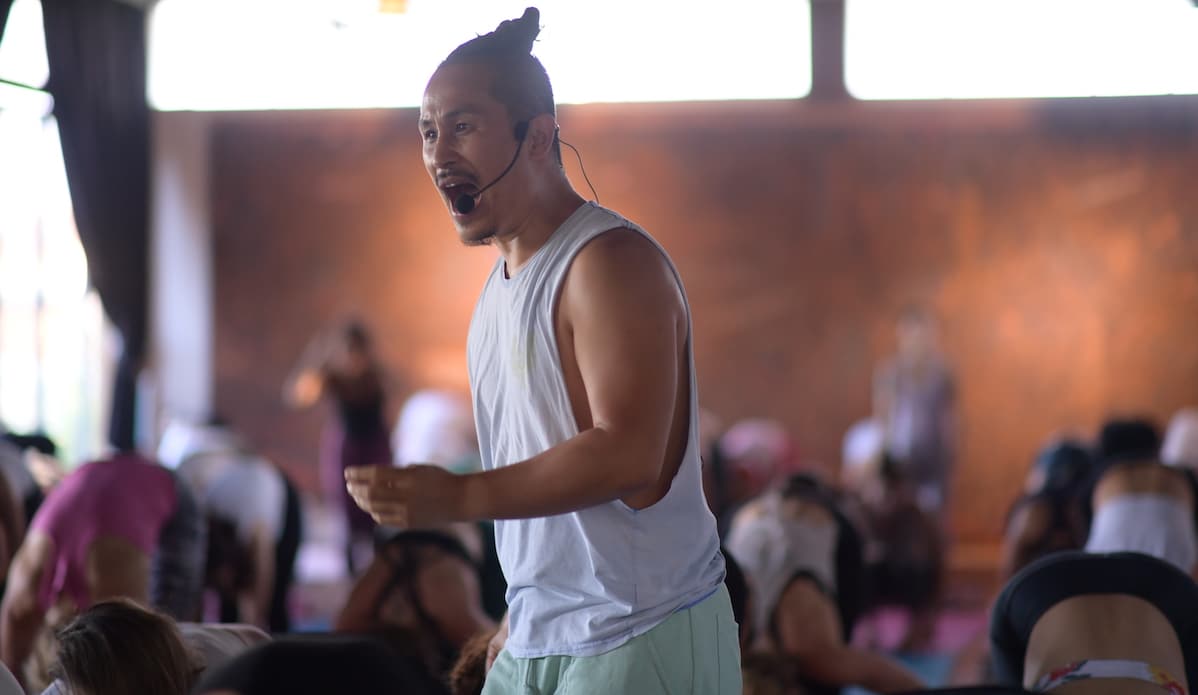
Reaching your yoga dreams is all about the right attitude, alignment and action. Photograph by Yongsubi.
2. Alignment describes the proper positioning or state of adjustment of parts (in the context of Inside Yoga, specifically the bones in your body) in relation to each other. Simply put, Inside Yoga aims at the adjustment of bones through muscular power.
The Inside Yoga Team will help you find the right technique for every asana.
3. Action Now that you have a positive attitude and have learned everything about the right alignment, you have to do this next part on your own. Repeat your alignments, keep your positive attitude up, until you achieve your dreams. According to Young Ho, repeating your action at least 10,000 times will be necessary in order to reach your goal.
The Three A’s are your means to achieving your yoga dreams. It takes time and effort, and you have to believe in your dreams in order to achieve them. How much do you want it?
In summary, these principles are a means of finding connectivity with other people. The human body is a construct which cannot be influenced in isolation. Everything is connected to everything else, influencing each other every second of every day. Yoga helps guide this mutual influence in a positive manner towards being “with each other” and “for each other”, similarly to the principle of Karma.
If you’d like to find out more on the topic, these videos on Inside Yoga Alignment are for you. If you’d like a quick but intense look into the Inside Yoga Teacher Training, the 3-day intense training video is for you.
4. What If I Can’t Come to Inside Yoga in Person?
Now that you know everything there is to know about Inside Yoga and Young Ho Kim, you may be wondering: What’s next?
Do you want to be part of the story of Inside Yoga, but you don’t know where to begin?
If you’d like real-life classes with other people and a special place you can go to in order to practice yoga, Inside Yoga is for you. But what if you can’t come to Frankfurt, Germany? You can find various Inside Flow classes on our TINT website.
If you want to become a teacher, you can also attend our TINT online teacher trainings such as the Inside Flow Academy to become a certified Inside Flow Yoga Teacher. You can also find out more about your options with our TINT Academy, which offers you extensive teacher trainings from the world’s greatest yoga minds to help you extend your yoga knowledge. At the end of each course, you have the opportunity of taking an exam and receiving a TINT Academy Certification as proof of your newly acquired yoga skills.
Click the video to learn more about the Inside Flow Academy Online Teacher Training.
Want to watch more yoga videos by Young Ho Kim and some of his students, like Ami Norton, Hie Kim and Alexey Gaevskij? We have them on TINT, as well. Many of the principles and philosophies of Inside Yoga are dear to our hearts here at TINT, and working with the World’s Greatest Yoga Minds is our mission. Curious to learn more? Find more information on how to become a member of TINT here.
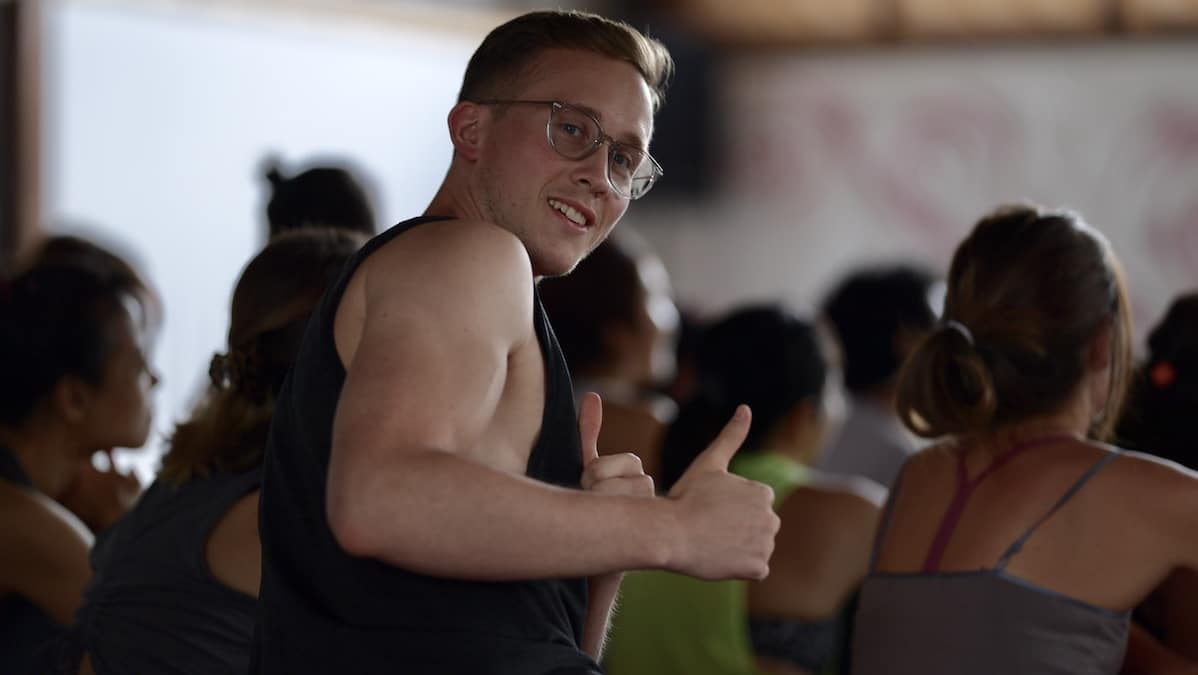
Our team at TINT is made up of both passionate yogis like Mike, and more casual yogis. Photograph by Yongsubi.
We’re excited to welcome you into the ever-growing family of Inside Yoga and TINT!
Header Picture by Yongsubi.


